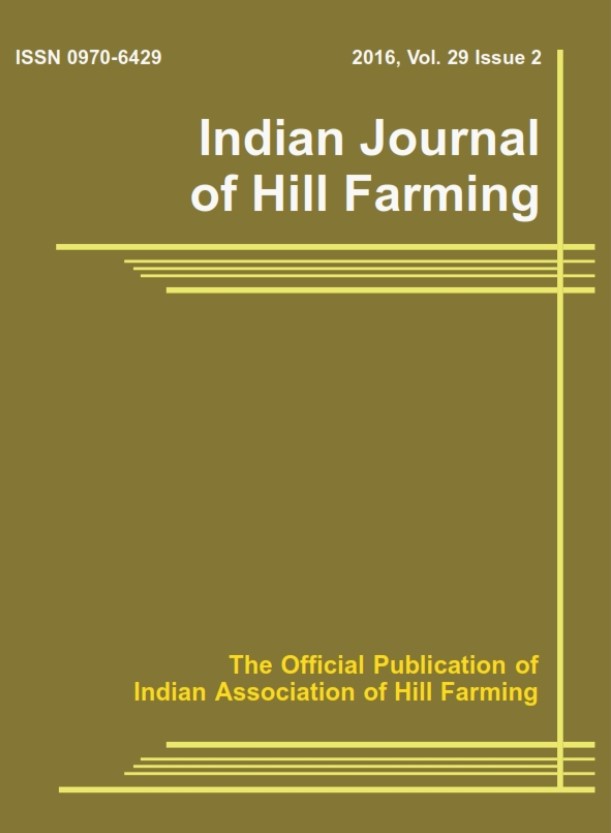Economic Analysis of Jhum Farming System of West Garo Hills, Meghalaya
DOI:
https://doi.org/10.56678/Keywords:
Jhum cultivation, Natural farming, Sustainability, B:Cratio, Cost of Production.Abstract
This study focuses on the economic dimensions of Jhum cultivation- a traditional slash-and-burn agricultural practice, among indigenous communities in the West Garo Hills District of Meghalaya. By examining production element, the research aims to identify opportunities for improving farming techniques and enhancing the livelihoods of Jhum farmers. In the study researcher identified that the Darechikgre village has the largest share of Jhum land (24.58 per cent) while Rengsangre has the smallest (15.08 per cent) respectively. The participants' literacy levels vary across the study area, with most farmers having completed secondary education. The average cost of cultivation (Cost A1) per hectare differs by village: Rs. 4879.20 in Darechikgre, Rs. 3081.60 in Waribokgre, Rs. 3819.90 in Asanang, Rs. 2996.00 in Rengsangre, and Rs. 4280.00 in Chandigre. Jhum cultivation follows principal of natural farming and do not incur additional cost for irrigation and manure. Significant variability in production costs, gross yield, total revenue, and benefit-cost (B:C) ratios is observed across the study area, with soil fertility, climate conditions, and agricultural techniques influencing yield differences. Darechikgre, with a B:C ratio of 1.8, is the most profitable, while Asanang (0.5) and Rengsangre (0.6) operate at a significant loss. The overall B:C ratio for the Rongram block is 1.2, indicating that, on average, the regions are operating at a profit. A regression model was used to assess the factors affecting productivity, showing that total Jhum land, Jhum experience, and quantity of seed significantly influence total production.
Published
Issue
Section
License

This work is licensed under a Creative Commons Attribution-NonCommercial-NoDerivatives 4.0 International License.




